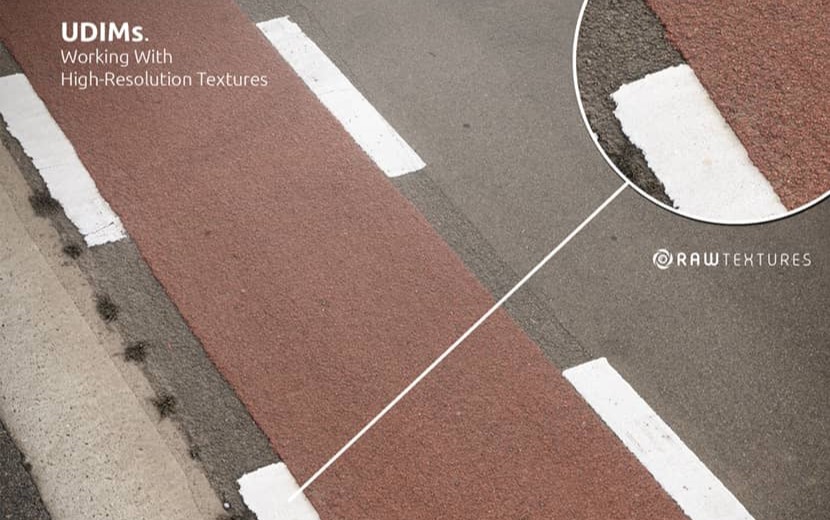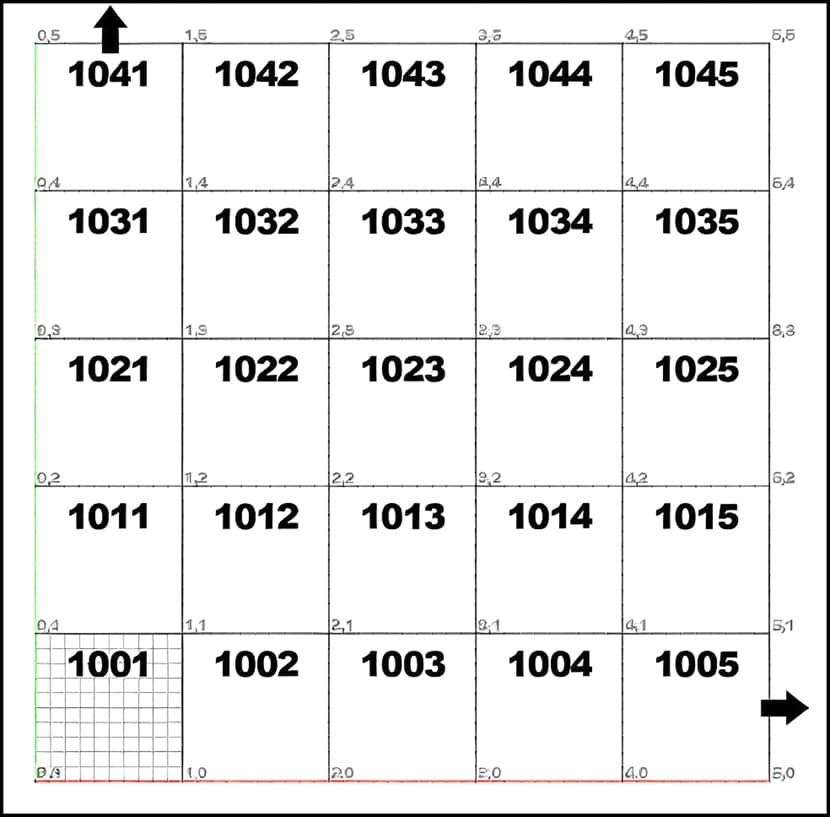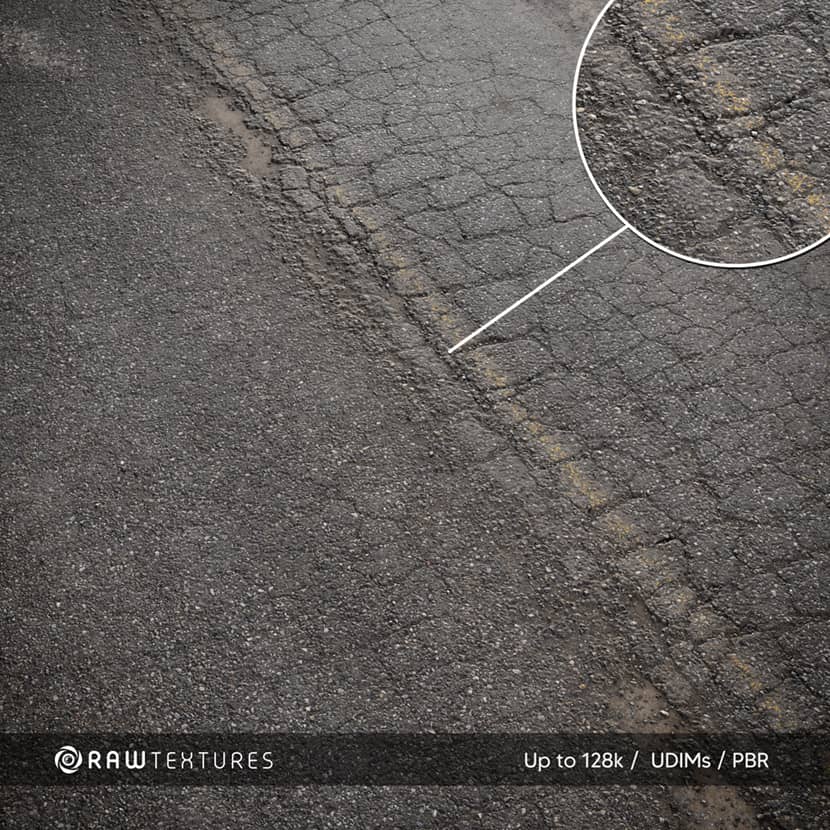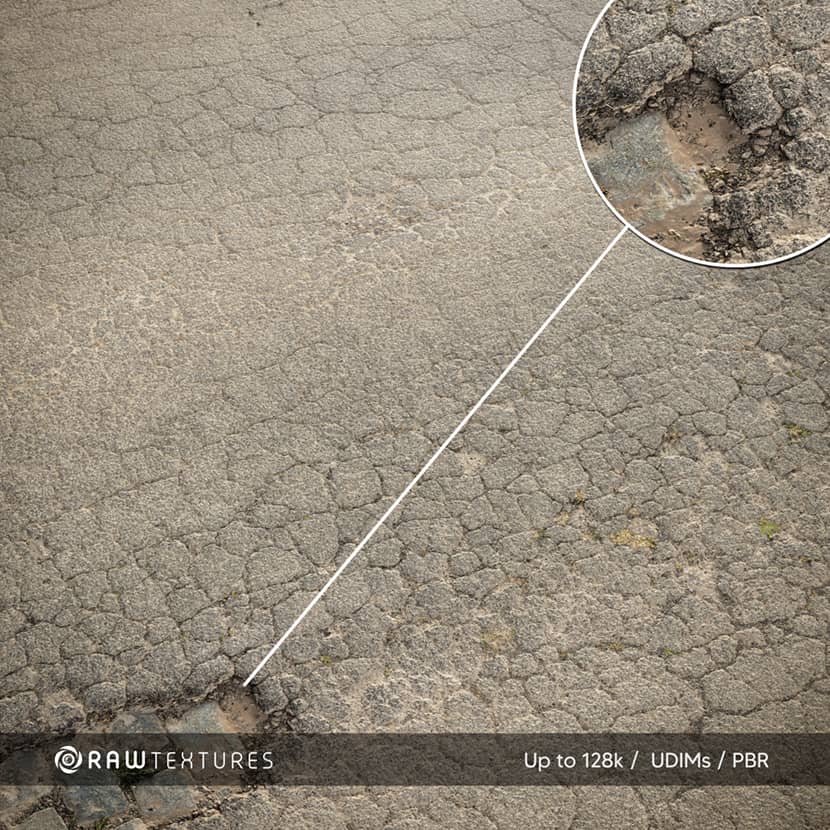
In this article, we analyze UDIMs most easily and understandably. How can this texture technology be used, and how can we benefit from it?
What are UDIMs?
The system was created in early 2002 by Richard Addison-Wood, the senior software developer at Weta Digital and father of UDIMs. The kernel of the idea was probably raised in some meetings while discussing the limitations of the representations already used at that time. With his deep understanding of the IEEE floating point representation, he knew the limitations and trade-offs we would need to know when encoding additional information in UV coordinates.
UDIM stands for U-Dimension, a UV mapping technique used in 3D texturing workflows to manage high-resolution textures. Imagine having a colossal texture map that you cut into smaller pieces for a more manageable workflow. UDIM does this virtually, assigning a unique identifier to each tile (small piece), letting you use multiple lower-resolution textures instead of a single, massive one.
Even more technically, UDIM is an advanced UV mapping system that revolutionizes texture management by dividing the surface of a 3D model into multiple UV tiles, each uniquely identified with a two-digit code. This system enhances texture detail by allowing several high-resolution textures to different parts of a model without overlap. The UDIM convention starts with '10' for the U coordinate and increments the last two digits for the V coordinate, streamlining the organization of textures across the model’s surface.

For a more advanced and deep explanation, jump onto the Learn Foundry website.
Unveiling the UDIM Workflow.
Standard UV mapping uses a single image texture for the entire mesh. This works very well most of the time, but it can be inefficient for large meshes, especially in areas of varying importance.
Below, you can watch this simple and well-explained video by CG Cookie, which discusses Blender UDIM Textures, what they are, and how to use them.
What are the benefits of UDIM Textures?
The benefits of the UDIM system are particularly evident in complex projects. For instance, imagine a detailed character model. The face might require a high-resolution texture for all the fine features, while the back might be fine with a lower resolution. Using a single high-res texture for the whole model would waste space for the less critical areas.
UDIM solves this problem by allowing you to split the UV map into sections called tiles. Each tile can have its separate texture image with a different resolution.
Additionally, it’s important to mention that many 3D software packages and game engines support UDIMs, making it a widely used standard.

Managing High-Resolution Textures with UDIMs.
UDIM breaks ultra-high-resolution textures down into easier-to-handle pieces while maintaining the high-resolution detail. In the video below, FlippedNormals provides the UDIM modeling and texturing essentials
Seamless Texturing Across UDIM Tiles.
Some 3D painting programs like Mari or Mudbox can seamlessly paint across UDIM tiles, letting you work on the entire texture as if it were one piece. In this video tutorial by Maxim Gehricke, you can learn how to import your UDIM texture sequences from Substance Painter, or your baked mesh maps in Mari.
UDIM in Action: Popular Software and Game Engine Support.
UDIM is a texturing technique and not necessarily a core feature of 3D design software. While many popular 3D design programs support UDIMs, some may require plugins or external tools.
UDIM’s seamless compatibility with all major 3D software platforms, as well as leading rendering engines, ensures that textures integrate perfectly and render accurately, no matter the complexity of the tools used in the workflow. This compatibility facilitates a smoother texturing process, reducing technical challenges and promoting efficiency.
Some well-known 3d software and render engines that support UDIM technology are:
| Autodesk Maya | Autodesk 3ds Max | Unreal Engine |
| Blender | Houdini | Modo |
| Mari | Mudbox | Substance Painter |
| ZBrush | Unity | CryEngine |
| Godot | V-Ray | Arnold |
| Redshift | Octane |
UDIMs have found a significant application in the gaming industry, especially with their effortless integration into Unreal Engine. This allows for multiple high-resolution textures within game environments, enhancing visual fidelity and detail. Combined with Unreal Engine’s texture streaming feature, which dynamically loads and offloads textures based on the viewer's proximity and scene requirements, UDIMs help maintain optimal performance while delivering stunning visual quality.

UDIM Workflow Tips and Tricks.
Even the most experienced artists can encounter issues. By understanding these common issues and implementing the suggested solutions, you can effectively troubleshoot UDIM problems and ensure your textures render beautifully in your real-time graphics project. Below, we break down common UDIM problems you will probably need to handle.
Optimizing UDIM Textures.
UDIMs offer a powerful approach to texturing for real-time graphics, but proper packing and organization are crucial to maximizing their efficiency. Here are some strategies to consider.
UDIM Packing:
Texture Size: Consider the texture resolution based on the model's detail. Packing too large textures will waste memory, while undersized textures lack detail.
Intelligent Packing Algorithms: Utilize software features or plugins that offer intelligent packing algorithms. These algorithms can optimize how textures are placed within the UDIM tile layout, minimizing wasted space.
Mipmapping: Enable mipmapping within your 3D software or game engine. Mipmapping creates lower-resolution versions of your textures for distant views, improving performance.
UDIM Organization:
Logical Naming Conventions: Implement a clear and consistent naming system for your UDIM tiles. This will streamline organization and identification within your project.
Folder Structure: Establish a hierarchical folder structure to categorize your UDIMs. This might involve separating textures by material type (diffuse, normal, etc.) or by model component (head, body, etc.).
Texture Atlas: Consider creating a texture atlas for complex models with numerous UDIMs. This combines all UDIM tiles into a single image file, simplifying texture management within your game engine.
Missing or Incorrect Textures.
- Check File Paths: Double-check that your 3D software or game engine points to the correct UDIM tiles folder. Ensure the naming convention matches your software's expectations.
- UDIM Tile Naming: Verify that your UDIM tiles are named correctly. Most software follows a format with the UDIM number (e.g., _1001 for UDIM tile 1001).
- Texture Import Settings: Ensure your textures are imported using the appropriate settings. For example, some software may require enabling "normal map" or "roughness map" options for specific textures.
Seams and Visible Tile Borders.
Achieving seamless textures across UDIM seems to require extra attention. Here are some techniques to ensure a cohesive and polished look:
- Symmetry Painting: Use symmetry painting tools offered by some texturing software. These allow you to paint on one half of the model and automatically mirror it to the other, ensuring seamlessness across seams on symmetrical axes.
- UV Overlap: Enable UV overlap in your software settings. This slightly overlaps adjacent UDIM tiles in the UV space, providing a buffer zone for painting and reducing the risk of visible seams.
- Texture Wrap-Around: Adjust your painting brush settings to enable texture wrap-around. This allows your brush strokes to continue seamlessly across UDIM borders.
- Brush Size: Pay close attention to brush size when working near seams. A brush size spanning both UDIMs can help blend textures more effectively.
- Plan Your Seams: When possible, position seams along natural breaks or edges in your model's geometry. This can help disguise them and make them less noticeable.
- Sample Across Seams: Use the "sample across seams" feature in your texturing software (if available). This allows you to sample colors from both sides of the seam while painting, ensuring a more natural color transition.
- Use Ambient Occlusion: Leverage ambient occlusion maps to add subtle shadows and depth around seams, reducing visibility.
- Post-Processing: Consider using post-processing techniques in your game engine to add slight blur or noise to textures. This can help soften any remaining harsh seams. Implement subtle blur or noise in your game engine's post-processing effects. This can help soften any remaining harsh seams.
Performance Issue.
- Texture Size: Large UDIM textures can consume significant memory. Review your texture sizes and adjust them to balance detail and performance.
- Mipmapping: Ensure mipmapping is enabled in your 3D software or game engine. Mipmapping creates lower-resolution versions of textures for distant views, improving performance.
- Number of UDIMs: While UDIMs are efficient, using an excessive number can impact performance. Consider if a traditional texture atlas might be more suitable for simpler models.
Combining these techniques and careful planning allows you to achieve seamless UDIM textures that elevate your project's visual quality. You can also ensure your UDIM textures are optimized for real-time rendering, reducing memory consumption and enhancing your project's overall performance.
Using UDIMs at Raw-Textures.
First of all, we would like to thank our friend Stanley Brusse, founder of Raw-Textures, for his valuable help in writing this article.
Raw-Textures library leverages UDIM technology to provide exceptionally high-quality textures suitable for large-scale areas. These textures excel in both distant and close-up views, ideal for projects demanding a realistic rendering of road surfaces and other extensive details. Whether for urban simulations, virtual reality, film productions, or immersive gaming environments, UDIM-enhanced textures ensure meticulous rendering of every detail.
Using a UDIM-compatible library means choosing high-resolution, well-organized textures that meet the rigorous demands of today’s 3D content creation. This improves the aesthetic quality of projects and ensures a streamlined and effective texturing process, making resources an invaluable tool for 3D artists pushing the boundaries of digital visualization. With the added benefits of advanced gaming engine technologies like texture streaming, Raw-Textures guarantees an unprecedented visual experience that amazes viewers.

Thank you for reading this article. We hope that you now have a clearer understanding of UDIMs and how to use them correctly!
Kind regards & keep rendering! 🧡

About the author
Vasilis Koutlis, the founder of VWArtclub, was born in Athens in 1979. After studying furniture design and decoration, he started dedicating himself to 3D art in 2002. In 2012, the idea of VWArtclub was born: an active 3D community that has grown over the last 12 years into one of the largest online 3D communities worldwide, with over 160 thousand members. He acquired partners worldwide, and various collaborators trusted him with their ideas as he rewarded them with his consistent state-of-the-art services. Not a moment goes by without him thinking of a beautiful image; thus, he is never concerned with time but only with the design's quality.
Test the Rebus Render Farm for Free
